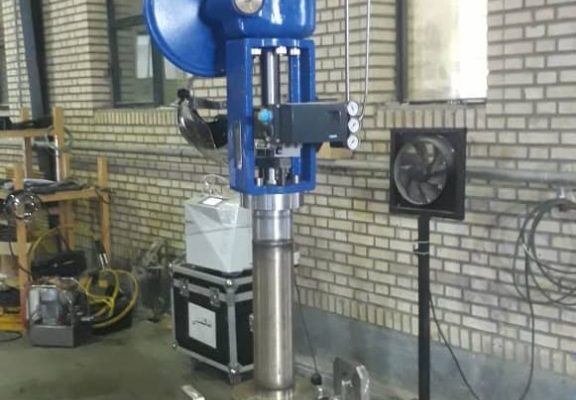Equipment Required for Cryogenic Valve Testing
Test Dewar (Insulated Test Dewar):
A double-walled container designed for immersing the valve in liquid nitrogen.
Liquid Nitrogen Tank:
For storage and transportation of liquid nitrogen, two 350-liter liquid nitrogen tanks are provided.
Helium Cylinder:
Used to inject helium into the valve and check for leaks under cryogenic conditions.
Oxygen Sensor:
The system is equipped with an oxygen sensor that alerts if the oxygen level in the environment falls below the permissible limit.
Additional equipment includes:
- Temperature Monitoring System
- Torque Meter
- Control Stand
- Seat Leak Measurement System

Test Procedure
First, the valve intended for testing is mounted on the system. An initial test is performed to ensure the proper functioning of the entire setup.
The valve is fully opened, and liquid nitrogen tanks are connected to the input port through appropriate hoses. The test Dewar is then filled with liquid nitrogen.
The helium inlet and outlet valves are opened to replace the air with pure helium. The advantage of helium is that it has the lowest liquefaction temperature.
When the temperature of the internal body of the tank, the valve, and the liquid nitrogen are all equalized at -195°C, the helium valve must be closed, and a one-hour timer on the HMI is activated. During this hour, the valve remains submerged, and temperature diagrams are recorded.
Afterward, the torque required to open and close the valve is measured, followed by seat and body (shell) leak tests.
Our records
Cryogenic Valves of Rasta Group
Cryogenic Valve
- More..
Helitek is ready to test and evaluate various industrial valves according to ISO 15848. For more information, please contact us.
